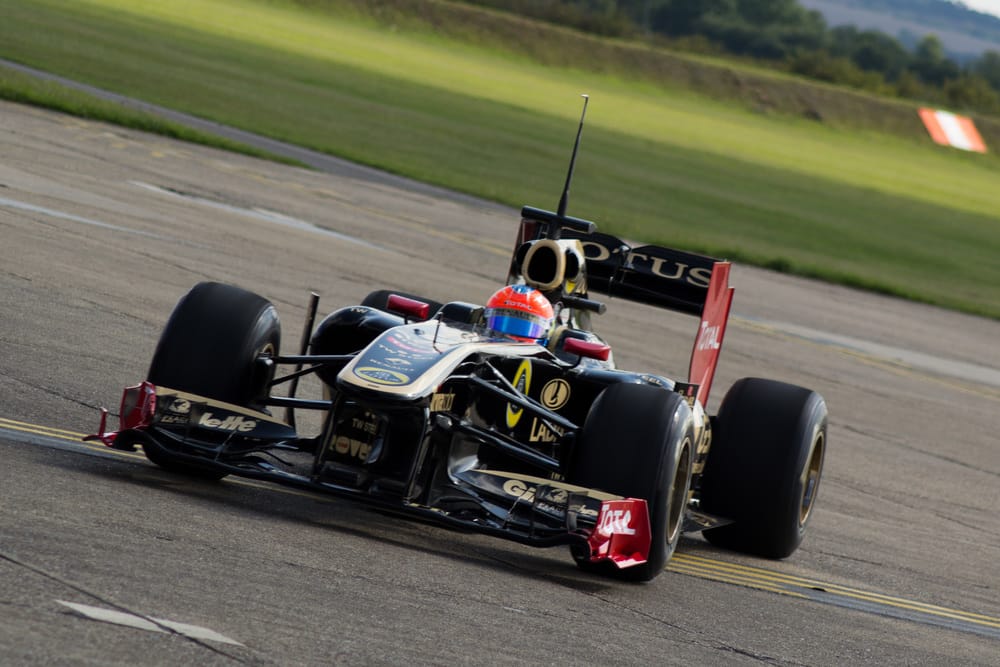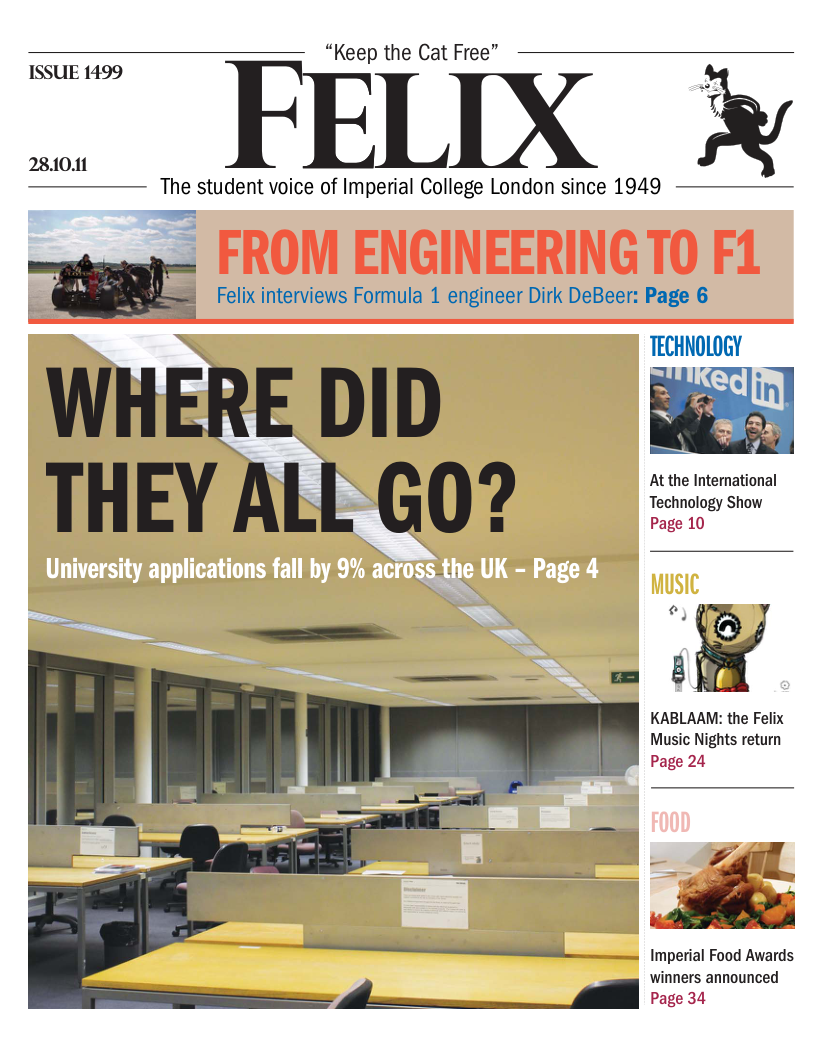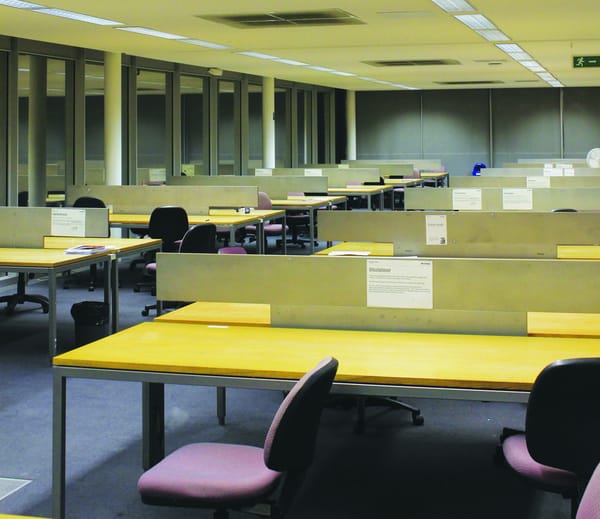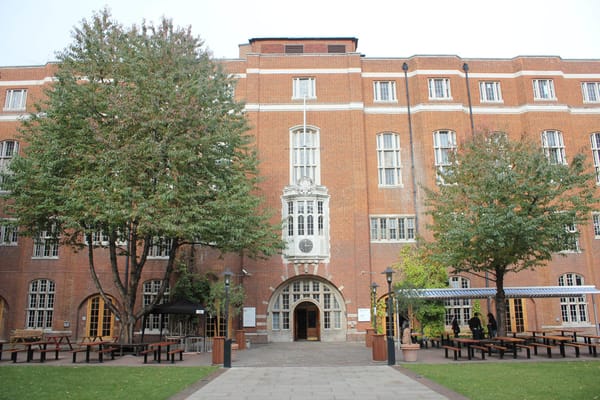Driven enough for F1?
James Cronshaw talks to Formula 1 engineer Dirk DeBeer about all things motorsport

I’m standing on a windswept airfield somewhere in Cambridgeshire. In the distance there’s the scream of a V8. A black silhouette of a car is racing at great speed down the runway. Behind me a radio crackles and the car turns off the runway, heading to where I’m standing, engine warbling at each downshift.
Now the noise is even louder, people around me have fingers in their ears. Earplugs are a must here. The driver pulls up and kills the engine. Immediately a half dozen men rush over with modified leaf blowers to stop the brakes catching fire. They push the car back into a large gazebo they’ve erected for the test as a temporary garage.
Inside there are more men with laptops, a myriad of cables, a heap of tyres and an array of bodywork. There’s even a spare engine tucked away in the corner. Geoff, the race team coordinator who is showing me around, explains that on test days like today they only bring the bare minimum required. Just behind me are two motor homes, filled with more equipment, and a small fleet of cars. Welcome to the world of Formula 1.
Today Lotus Renault GP are testing their 2011 car. The driver climbs out of the cockpit: it’s Roman Grosjean. I smile politely at him. He doesn’t notice me. Never mind, because today I’m here to get to know another part of the team that receives much less media coverage: the engineers. These are the people that make a team as fast as they are. Engineers for any team are expected to work evenings, weekends and are away from home most of the year, and yet the jobs are amongst some of the most competitive in the business. So how do you become a Formula 1 engineer, and what’s it like?
To find out the answers I’ve got an interview with an engineer. The test today is an aerodynamic one so it only makes sense to chat to someone from aerodynamics, preferably with an Imperial connection. Dirk DeBeer is head of aerodynamics at Lotus Renault GP and Imperial Aeronautics alumni. That should suffice. Here’s what he had to say...
How did you get into engineering and Formula 1?
I was always interested in motor racing – my father was keen on it and took me to Grand Prix. That’s how I got a love for Formula 1. I’ve always been interested in aerodynamics, so the two go together. I was always very keen - I did my homework and found out what the possibilities were and results said Imperial College. At that stage IC was very involved in Formula 1 aerodynamics, so I decided to go to Imperial and got involved with the motor racing society there, which was with Prof. John Harvey and Peter Beerman.
What advice would you give to an Imperial student intereseted in getting into F1 engineering?
When I joined, the motor racing was a lot smaller, it was more basic, it was only individuals that were very keen. At that stage we even had F1 teams testing at Imperial College. You could get involved with that sort of thing. That has now changed obviously. To get into Formula 1 you have to excel in your degree; in fact, nowadays most people have PhDs for aerodynamics in Formula 1. Other areas don’t require PhDs as much.
What was your career path?
Mine was rather tortuous and probably not a typical one. While I was at Imperial I was the research assistant for the Honda team’s tunnel and got a lot of contacts in Formula 1 and motor racing. I’m originally South African, I left South Africa because of the Apartheid. At the end of Apartheid I went back to South Africa, spent a while there and eventually decided I’d had enough there and wanted to get back into motor racing. I joined a team in America where I had some contacts. Swift Engineering – they did Indy racing.
It’s essentially a war between us and the other teams. Dirk DeBeer
Then there was a fall out between the car manufacturer and the team running the car. The manufacturer (who was head of aero while I was there) left and I ended up being the Head of Aerodynamics. So I was thrown in at the deep end really, and it was an unusual situation to be in. I stayed there until Swift decided to pull out of Indy racing and make Formula Atlantic cars, which I wasn’t really into. I was approached by Sauber in Switzerland who were busy building a new wind tunnel. They asked if I was prepared to come over and oversee the wind tunnel project, so I became the principal aerodynamicist at Sauber. I did that, but then BMW took over and I didn’t really like that so I decided to see what other possibilities there were. I moved to Renault in 2008, but not as Head as Aero, I become Head after the then Head got very ill.
What is your role within Lotus Renault GP as Head of Aerodynamics? As the Head of Department is the work more managerial?
I generally don’t go to race weekends; there is an aerodynamic presence at the track of course, but I have to make decisions on which direction to take the team. There is obviously the reality as you get to certain levels there are more and more managerial aspects which you can’t escape. The reality of being in charge of a group of people is that there’s quite a lot of management to be done.
Is there a normal day in the office as Head of Aerodynamics?
Not really, there are certain meetings and discussions, for example, the strategic direction and stuff like that. These are things that are ongoing. There are discussions that are important: like the results from the previous day’s test. There’s certain standard events. We have tunnels running 24/7, gathering an enormous amount of data so quite a lot of time is spent actually trying to get the best conclusions out of the data.
Lotus Renault GP had a superb start to the season, but it’s not been going so well of late. How does the team’s performance affect you? Is that part of the job?
That is the reality of it. You’re competing with a lot of other teams that have extremely smart people as well. Things don’t always go into place quite as you hoped they would. We made a decision to go for an unusual configuration exhaust. You can’t copy what other people are doing and therefore development is a bit more difficult, but when it works it is very rewarding.
What’s it like working for Lotus Renault GP?
It’s obviously not the biggest team, and therefore there is a slight frustration in that you feel you can’t compete on a level playing field. It is a very friendly company – that’s definitely a positive. It is a team where there’s not a lot of politics – it’s actually very friendly and people don’t have chips on their shoulders.
So you would say it’s not an overly competitive atmosphere?
No, not really – all Formula 1 teams are competitive but that’s just the nature of it.
Is there any internal competitiveness to get positions?
There is a bit of that. I think that anywhere you go in motor racing there is competition. Ultimately the people you are working with are driven; if they weren’t driven they wouldn’t be there. The reality is people are competitive.
The reality is, people are competitive. Dirk DeBeer
What is the best and worst part of the job?
I think the best part of the job is that it’s incredibly creative and you have the opportunity very quickly to see your creativity on the race track. In contrast working in aerospace, I’ve spent some time in aerospace, you spend years working on a project, you spend months and months looking at the data and years waiting for it to make it into production. In F1 if we find something which is relatively easy to make on Monday, it can be on the car for the race weekend. You see very quickly if it works. It’s essentially a war between us and the other teams trying to come up with the cleverest idea. You have to be innovative. To get ahead you have to have a good idea like the forward exhausts. The down side of the job is that you see every weekend if it doesn’t work. So the pressure’s enormous.
I thank Dirk for his time and we head out of the motorhome and back to the car. During the interview a couple more runs had been done and the mechanics were scurrying around the car changing bodywork. Engineers are poring over the latest set of data. I stick around with Geoff’s consent and watch the rest of the day unfold.
Nothing seems too rushed or panicked. This is a stark contrast to race weekends, maybe it’s because they’ve spent weeks planning this day in every detail. I have remind myself that unlike the driver, the engineers and mechanics I’m seeing working on the car here are the very same that are seen on the television every other Sunday. It’s getting late so I start to head home, in the distance I can hear that V8 scream again. The sound of three hundred brake horsepower per litre of displacement. The sound of Formula 1.
With thanks to Geoff Simmonds, Dirk DeBeer and Lotus Renault GP.







